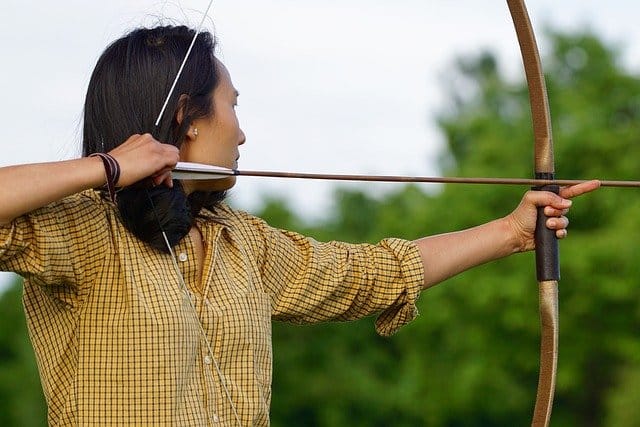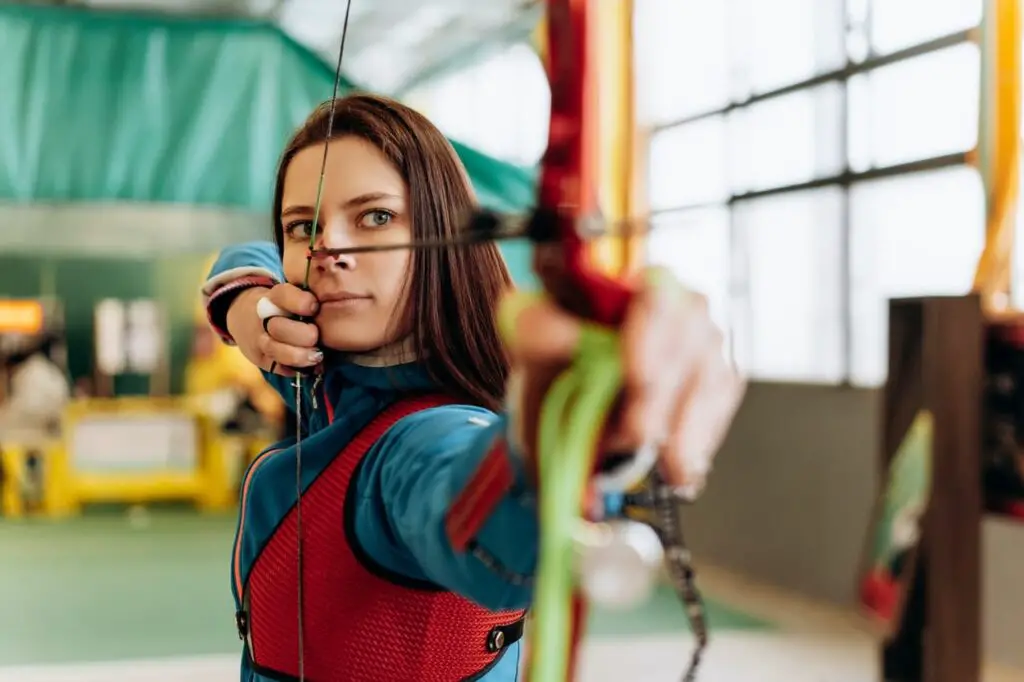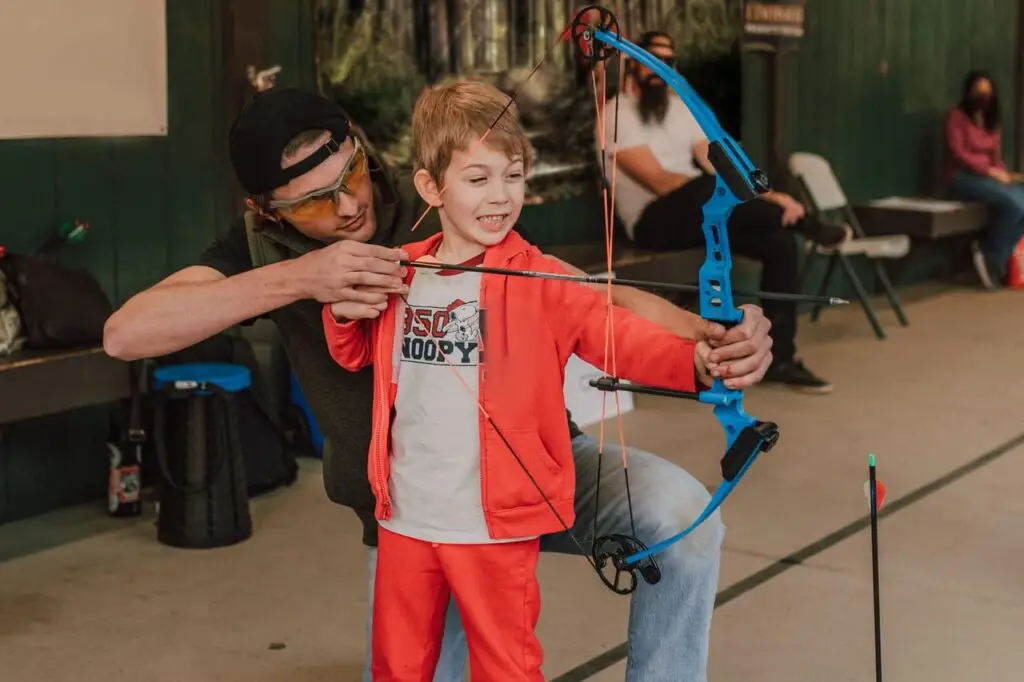Archery has been a fixture of the Summer Olympic Games for over 100 years, with athletes competing in meticulously precise events. But just how far away are archers expected to hit targets on the Olympic stage? Let’s take a look at the set distances and degree of difficulty involved at archery’s highest levels.
Olympic Archery Disciplines
There are three archery event disciplines contested at the Olympics:
- Recurve – Traditional bows with curved ends. Used without release aids or sights.
- Compound – Bows with pulley systems. Used with release aids and pin sights.
- Barebow – Recurve bows shot without sights or stabilizers. A middle ground between traditional recurve and more accessorized compound bows.
For each discipline, archers compete in individual and team competitions for both men and women. The target distances vary between the disciplines.
Recurve Distances
Recurve archers shoot at targets set at four different distances in Olympic competition:
- 30 meters – Ranking Round and Individual finals
- 50 meters – Ranking Round
- 70 meters – Ranking Round
- 90 meters – Team Round
The ranking round consists of 72 arrows shot, with 12 arrows per distance. The 10 highest scoring individuals and teams then advance to the elimination finals.
Compound Distances
Compound archers shoot at 50 meter and 30 meter distances:
- 50 meters – Ranking Round
- 30 meters – Ranking Round and Finals
As with recurve, 72 arrows are shot in the ranking round, split evenly between the two distances. Top performers qualify for finals.
Barebow Distances
Athletes in the barebow discipline all shoot from a single distance:
- 30 meters – Ranking Round and Finals
72 arrows are shot from 30 meters to determine rankings and finalize berths.
Degree of Difficulty by Distance
As expected, the farther shooting distances present greater accuracy challenges:
- 30 meters – The closest and least demanding distance. Slight errors still hit the target.
- 50 meters – Manageable for skilled archers. Minimal sight adjustments are needed.
- 70 meters – Beginning of true long distance shooting. Judging wind, elevation and line cut is critical.
- 90 meters – The longest Olympic distance. The most mentally demanding and precision targeting required. Gusting winds greatly impact arrow flight over this length.
The best Olympic archers have precision down to a science. But conditions like weather, nerves and fatigue impact performance when pushing to extremes of target distances and endurance across hundreds of arrows.
Unique Aspects of Olympic Archery
Olympic archery introduces unique aspects not faced by archers in other competition settings:
- International travel – Jet lag, diet changes, unfamiliar ranges, and language barriers add stress.
- Outdoor shooting – Sun glare, weather, wind and uneven terrain increase uncertainty.
- Olympic pressure – The high stakes environment can get into athletes’ heads.
- Endurance format – Shooting for hours tests focus and avoids fatigue.
- Equipment regulations – International rules limit bow specifics and accessories allowed.
The combination of physical, mental and environmental elements testing accuracy and consistency makes Olympic archery a true test of overall skill.
Elite Accuracy Standards
The scoring rings on archery targets demand tremendous accuracy at Olympic ranges. The center ring measures only 12.2 cm across at the longer distances.
To competitively rank, archers must drill arrows into the 10 and 9 rings with over 90% frequency. The best shooters average 9.5 – 9.9 rings per arrow at 70 meters. This requires sub-inch precision across 70+ meters of flight.
With each archer shooting 144-216 arrows over hours, arms and focus get taxed. Olympic caliber accuracy requires both tremendous skill and stamina.
Olympic Archery Viewership
Television viewership of Olympic archery has increased over recent Summer Games. The anticipation of seeing top athletes hit bullseyes from up to 90 meters away draws in fans. Careful shot setup and release techniques combined with the impacts make for entertaining viewing.
Now understanding the exact Olympic archery distances and degree of difficulty, spectators can better appreciate the pinpoint accuracy and mental fortitude required. For both new and returning Olympic disciples, hitting targets far downrange never gets old.


